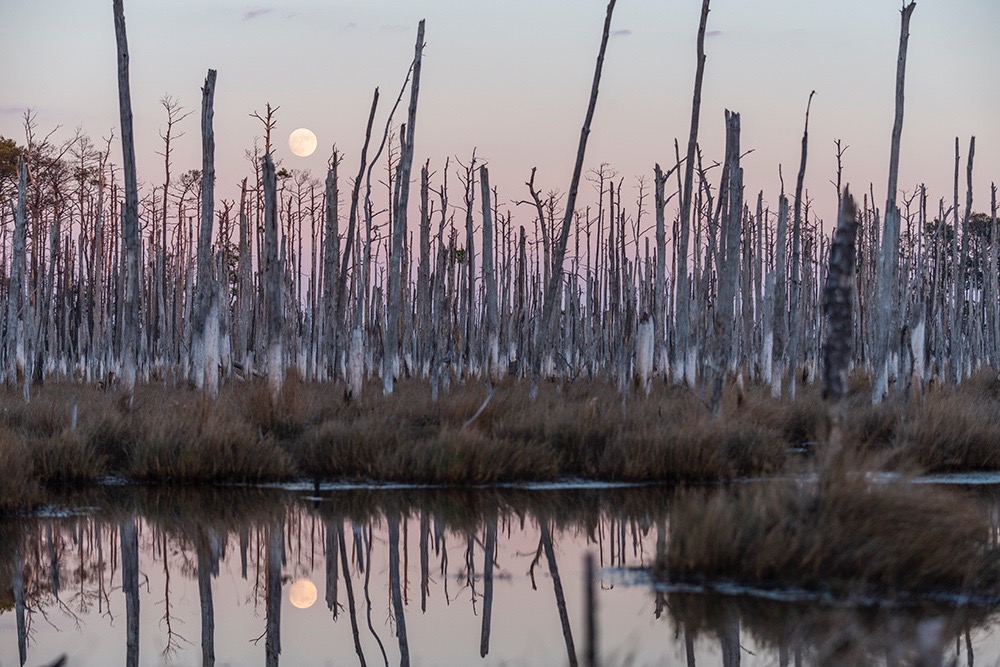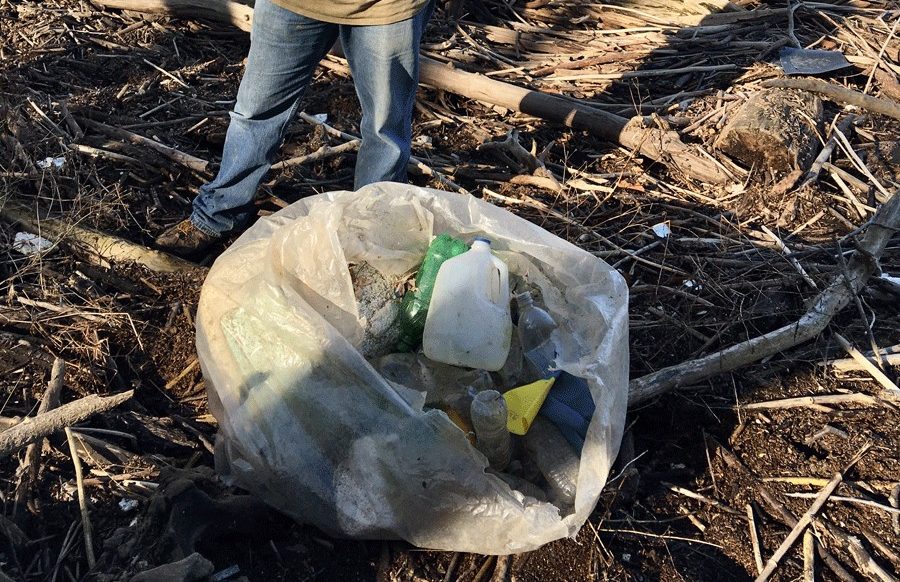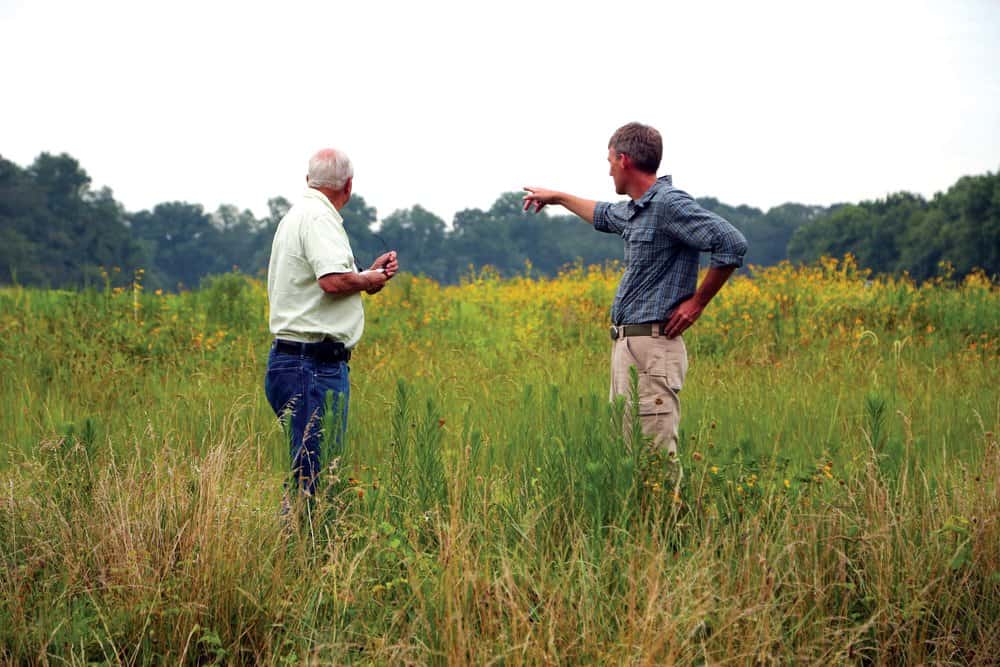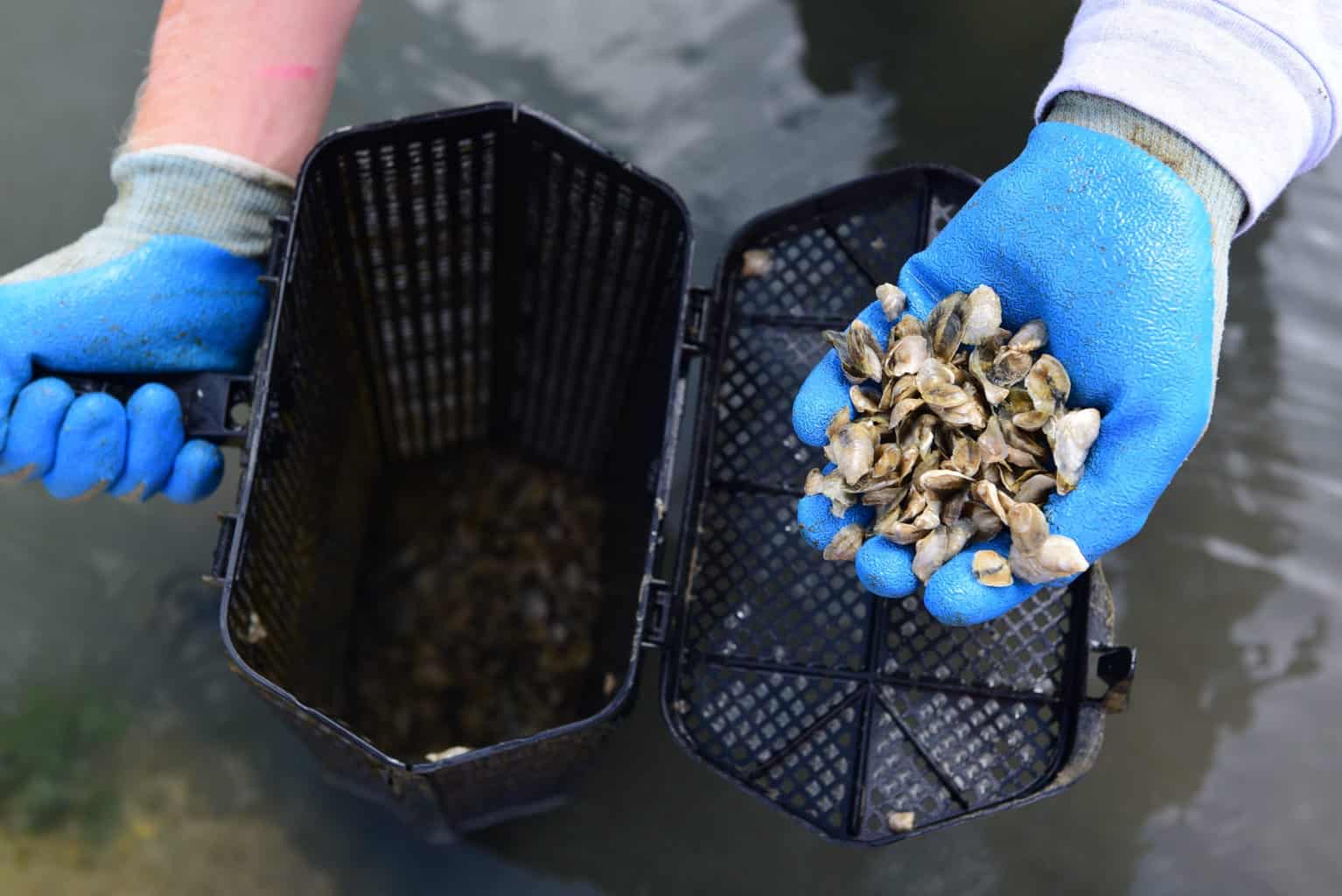Vanishing forests tell a tale of rising water
When North Carolina residents Susan McGuirk and her husband bought a holiday house on a large waterfront plot in Wingate, in Maryland’s Dorchester County, the stately old home hadn’t been occupied for more than a decade.
“We pulled into the driveway and it was love at first sight,” she said. “Once inside, it was obvious just how well built the house was.”
Since then, they’ve sealed up the original wavy glass windows, fixed walls, installed insulation and new plumbing and wiring, and raised the entire waterfront property to protect against regular flooding. And as they’ve rehabilitated what McGuirk called a “gem,” they’ve watched the coastal landscape around it change as well.
“The point that we can see when we look out there is called Crab Point, and when we bought the place in 2010 there were 80 trees on that point,” McGuirk said. “Now there’s one. They’ve fallen and gone.”
The Chesapeake has become a global hotspot for the emergence of ghost forests—stands of dead and leafless trees before they topple into piles of logs. Within the Chesapeake, Dorchester County may be the greatest hotspot of all.
Throughout the rural and forested land that surrounds their house, Susan points out “acres and acres” of dead trees. “There’s a little church called Emmanuel Episcopal Church, and it is surrounded by all those dead trees.”
The culprit of arboreal mortality tends to be environmental change. In Colorado, ghost forests are being created by beetles attacking pines at higher altitudes as temperatures warm. In California, forest overcrowding from a century of wildfire suppression followed by severe drought left more than 100 million trees dead.
Here, the key culprit is salt, which can kill a tree outright or make it more susceptible to attacks by pests.
Global sea rise caused by heat-trapping pollution and a gradual sinking of the land around the Chesapeake have combined to create some of the world’s fastest local rates of sea rise. That’s been pushing saltwater higher up shorelines, where it’s seeping into sweeping stretches of intact forest and killing them off.
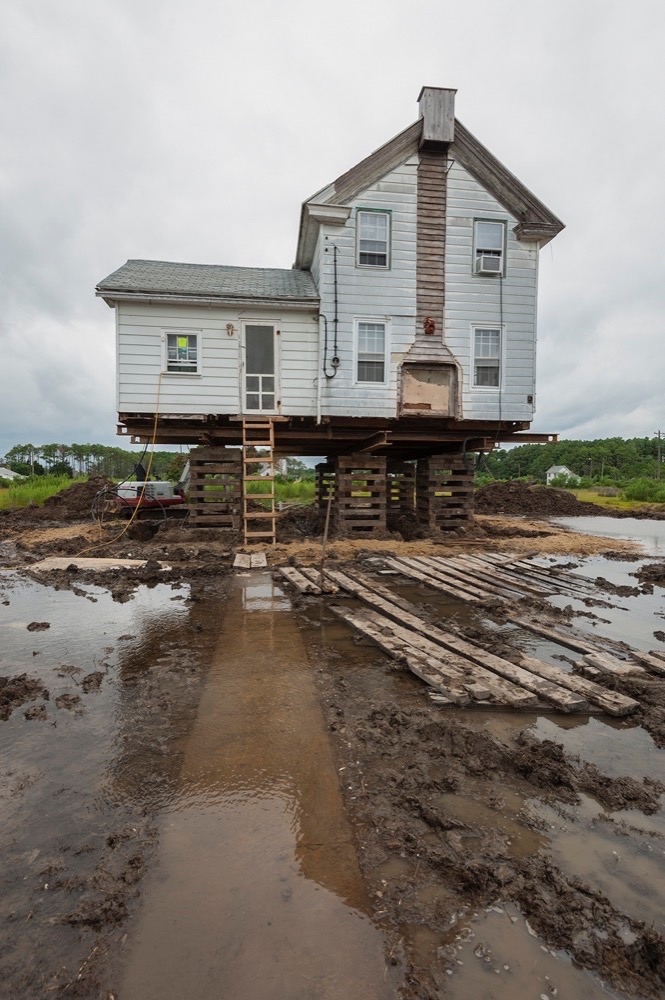
McGuirk hasn’t been able to figure out the exact age of the house, but she said local oral history suggests it was built well over a century ago. Data gathered by scientists at the Virginia Institute of Marine Sciences (VIMS) indicate the property would have been dry back then, most likely covered with forest or farmland.
Now, the house is surrounded by lawn, mud and marsh, and the land is regularly covered by water spilling up from an estuary. “When everything is aligned—a full moon, easterly winds, high tide—it gets pretty dicey,” McGuirk said.
The appearance of these assemblages of towering deadwood along the Mid-Atlantic and Gulf coasts have captured the fascination of national media outlets, which point to them in photo essays as flamboyant evidence of the grim reality of climate change.
The natural sinking of the land following the prehistoric retreat of glaciers from North America is also driving up water levels throughout the region, compounding the briny impacts of climate change. And as the forests die back, their roots decompose, lowering the ground further still.
As coastal woodlands die, birds and other wildlife that had depended upon them for food and habitat are forced inland. The changes are also affecting parcels of land that in some instances have been owned by the same families for hundreds of years.
“As we start to lose forests, these landowners are losing their identity—they’re losing how they can use the land,” said Matthew Hurd, a forester with the Maryland Forest Service.
“For me there’s a huge mental shift between someone who owns a forest and manages it versus someone who has marsh.”
Coastal timberlands and farmlands are losing value as salt continues its upward march. Rising sea levels can have corrosive effects on the fertility of coastal lands, with knockout punches often delivered by storm surges that leave large doses of salt behind as they subside.
Coastal ecologists point out that the ghost forests of the Chesapeake don’t represent local ecological carnage, so much as a transformation from one ecosystem to another. Beneath the desiccating branches of dead trees, marshland is seizing the soggy land from forests that can’t abide the soil’s new chemistry.
To survive as seas rise, marshes can grow vertically—though only up to a point before they get swamped. They can also migrate inland, conquering areas that formerly harbored forests, farms, and yards. Experts point to ghost forests as visually arresting indicators of marsh migration.
Marshes provide critical habitat for fish and ducks. They also offer powerful natural protections for coastal communities and infrastructure from flooding during storms. More than half of wetlands nationwide are estimated to have been destroyed by development and other forces, though they remain widespread in relatively undeveloped places like Dorchester County.
With few roads or buildings blocking their migration, research by Climate Central’s sea level scientists has indicated marshes could expand their territory in Dorchester County by more than a third from 2000 to 2050. Other Eastern Shore counties are projected to see even bigger expansions of marshland.
The new marshes aren’t perfect replicas of the old ones. An invasive variety of Phragmites (aka reeds) tends to beat native marshland species into new areas as trees start to die back and the forest canopy opens up.
The reeds’ feathery plumes can tower on rigid stems over a dozen feet. Native wildlife struggle to use the Phragmites for nesting and foraging, compared with native plants.
“We’re seeing a real expansion of that species as the forest retreats,” said Keryn Gedan, a biologist at George Washington University. “We think it just does better in the shady conditions than the native grass marshes. It’s the first one to take advantage of the increasing light availability.”
Matt Kirwan, a marsh scientist at VIMS, began investigating the emergence of ghost forests in 2000 as an undergraduate student. His research has found that 80,000 acres of forestland and 20,000 acres of farmland have transformed to marshland since the 1850s across the Chesapeake Bay.
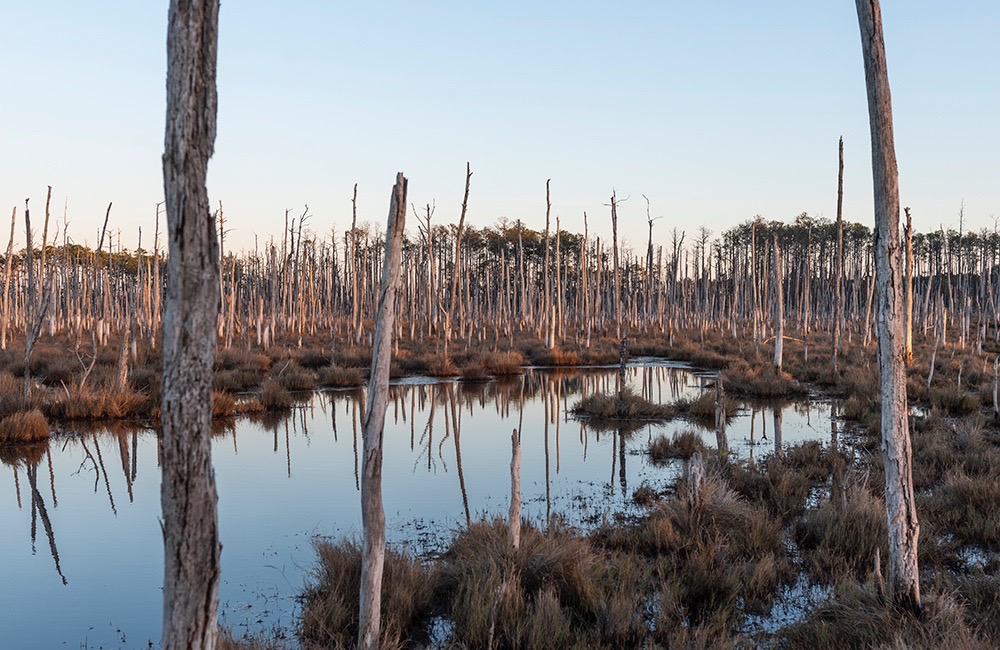
“We’re right at the edge of a live forest and a dead forest,” he said on a hot late morning in early June as he bushwhacked through dying coastal forest near the Moneystump Swamp in the Blackwater National Wildlife Refuge, about 20 miles north of McGuirk’s vacation home.
Kirwan was there leading a team of scientists from his lab on a weeklong fieldwork campaign as they gathered data from sites from Virginia to Delaware. The fieldwork was part of a multiyear effort to monitor physical and chemical changes as coastal forestland succumbs to marshland.
Research by Kirwan’s and other labs is helping to predict the emergence of ghost forests. This could help avoid costly efforts to protect and restore forests that are doomed to die.
“This was our transition zone plot, which was supposed to have 50 percent living and 50 percent dead trees,” he said, pointing around at an abundance of dead snags. “We established it last year and I would say there’s nowhere close to 50 percent living trees right now.”
A few hundred feet further inland, while talking in the cool shade of a large pine, Kirwan said the tree overhead might look healthy, but that it was already destined to be killed by the rising concentrations of salt in the soil beneath it.
“The little stuff dies before the big stuff,” Kirwan said. “You’ll see lots of healthy-looking pine trees but then you look below you and there’s nothing in the understory to take their place. So the forest, even though it looks healthy, it’s already effectively dead. Whenever those large trees die, it’ll only be marsh.”

